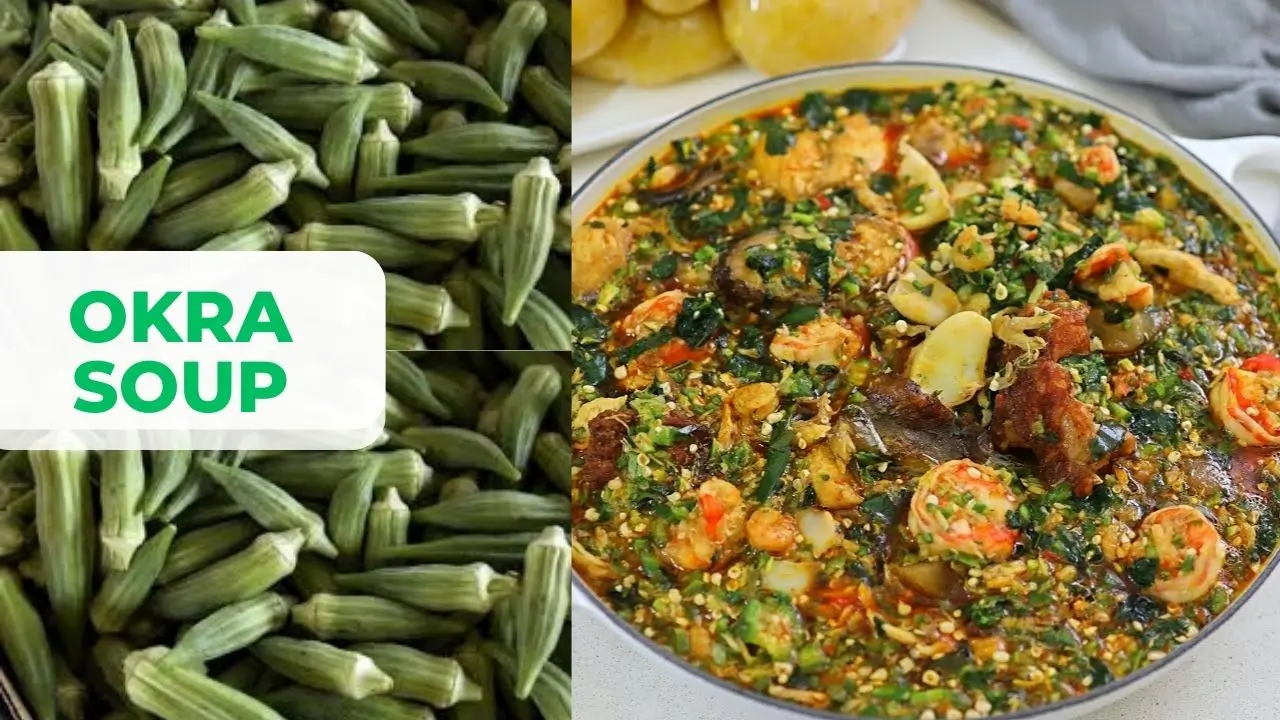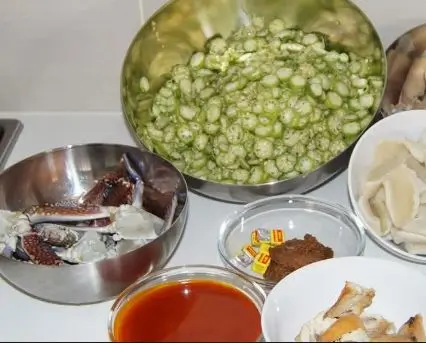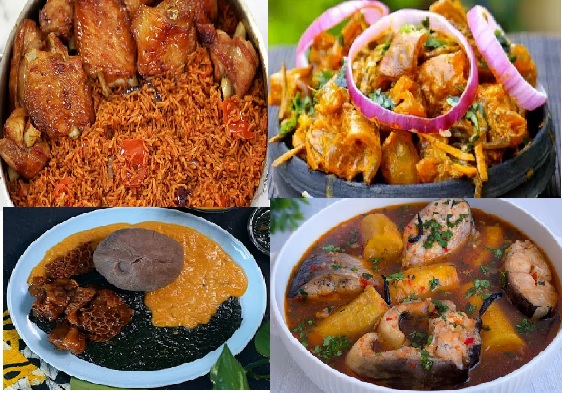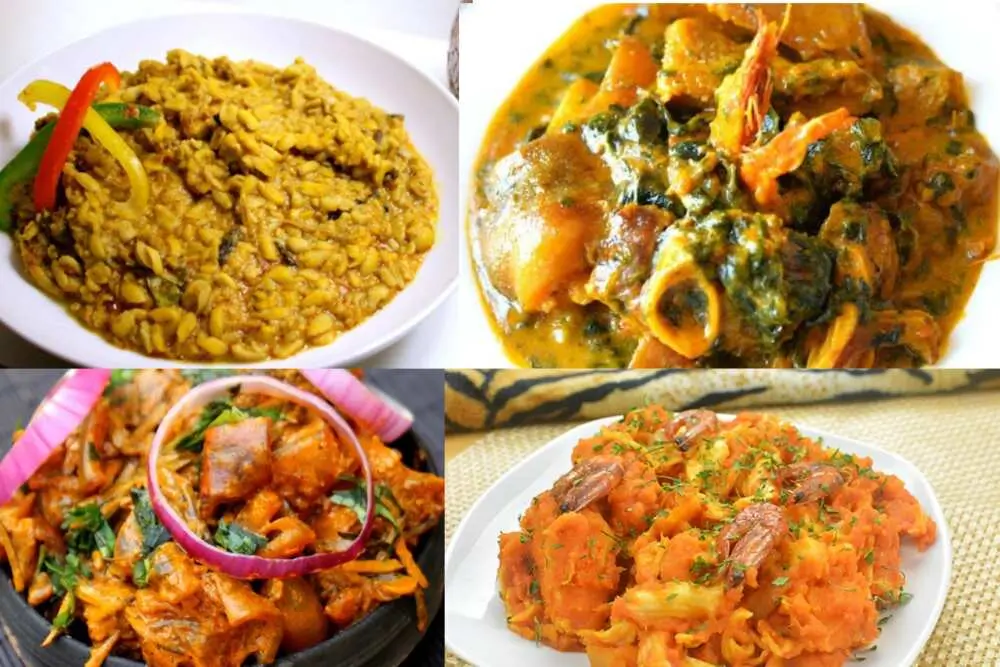If you have never tasted okra soup before, you may be wondering what this slimy, green vegetable tastes like. Okra soup has a unique flavour and taste that is addictive once you get to eat it. The Okra itself give the Soup a unique taste and look, and the flavour comes from the different combination of spices, vegetables, and proteins used.
Okra soup is a nutritious and comforting dish that is popular in many African, Caribbean, and Southern US cuisines. It is often eaten with Fufu, Eba, or Pounded Yam and several other swallow foods. Many cultures and regions have their way of making Okra Soup using the ingredients native to their region.
In the paragraphs that’ll follow, We’ll explore everything about Okra Soup and learn what makes lady’s fingers such a unique and nutritious Soup. So, if you’re ready to find out what Okra Soup has to offer, Lets begin!
What is Okra Soup?
Okra, known in English as the “Lady’s Fingers” and also called Okro, is a rich, nutritious Pod vegetable that is popular in many parts of Africa, the Caribbean, and the Southern United States.
Okra Soup is made from Okra, also known scientifically as “Abelmoschus esculentus,” a green edible vegetable that is Cut into tiny round pieces or grated and cooked with several ingredients to make a very nutritious Soup. Okra soup can have a wide range of appearances and flavors depending on the region and ingredients used.
Despite how popular and nutritious Okra is, it’s one of the cheapest soups you can make, as it doesn’t require much. Many households in Nigeria cook it because it’s accessible and affordable. Still, it may be a bit expensive depending on the ingredients you add and when Okra is not in season.
Origins and History of Okra Soup
Okra is a vegetable that has its origins in Ethiopia and was later cultivated in ancient Egypt and the Middle East. It is believed to have been brought to Egypt during the 7th century by Arab conquests. Over time, it spread throughout the Mediterranean and was introduced to Brazil in the 1600s by ships that were engaged in the Atlantic slave trade.
By the 1700s, it was being grown in the Americas, with records of cultivation in Suriname, Virginia, and Philadelphia. In recent times, Okra is now grown worldwide in tropical and subtropical regions. It is a staple ingredient in many cuisines around the world, including West Africa, where it is a main ingredient in many soups.
In Africa, it is widely cultivated in West Africa and parts of East and Southern Africa. The edible green seed pods have been used in soups for centuries, making them a vital part of African cuisine.
Since its origins in Africa, Okra has become a global food due to the trans-Atlantic slave trade centuries ago. Despite its humble beginnings, Okra has been used in soups to create a delicacy that people cannot resist.
Another Name For Okra Soup
Okra soup goes by many different names around the world. Some common ones include:
- Nigeria: Miyan Kubewa, Okra/Okro Soup, Obe Ila Asepo e.t.c.
- Ghana: Fante Mbire
- Caribbean: Callaloo
- Brazil: Quigombo
- Middle East: Bamia
What is Okra Soup Made of?
The ingredients used for cooking Okra Soup depends on the individual or region that’s cooking. For instance, some people don’t use Palm Oil in the Soup while others use it. However, the main ingredient in this soup is Okra. Below are some of the ingredients needed for cooking Okra Soup:
- The main ingredient of the soup is Okra. It can be added whole, sliced, or cut into rounds. The smaller it is cut, the thicker the soup becomes.
- Palm Oil to add some colour and taste.
- Smoked fish or meat, fresh fish, chicken, or beef or any other stock of your choice.
- The Soup will need and seasonings onions, salt, and pepper.
- You can choose to Ugu, scent leaves, bitter leaves or even hot leaf for extra flavor and nutrients.
Nutritional & Health Benefits of Okra Soup
Okra soup has many nutritional and health benefits from its vitamin and antioxidant-rich ingredients. Below are some of the nutritional benefits of Okra Soup:
- The fiber found in Okra helps to improve digestion and keep the gastrointestinal tract healthy.
- Okra contains vitamin C, A, K, folate, magnesium, and calcium, which helps to improve or boost the immune system to fight against diseases.
- Antioxidants in Okra may help reduce inflammation and lower the risk of some chronic diseases. Spices like ginger also add antioxidants.
- Some studies suggest Okra may help stabilize blood sugar levels due to its fiber content in its fight against Diabetes.
- Other Benefits Include improved heart conditions, lower Sugar levels, and stopping the growth of Cancer cells, while the antioxidants may reduce inflammation.
Disadvantages of Eating Okra Soup
There are a few disadvantages to eating okra soup in moderation. Some people may need to avoid overconsumption if they have digestive issues related to FODMAPs. Occasionally, it can contribute to gas and bloating.
However, the nutritional and health benefits overshadow the side effects. Still, it is always advisable to eat Okra in moderation and stop eating it if you get reactions or feel uneasy after eating the soup.
Don’t hesitate to consult your Doctor if you notice any changes or have health issues after eating Okra Soup. The Doctor would be able to determine the course of the problem and recommend solutions to fix it .
How to Prepare Okra Soup
There is no one right way to make okra soup, as different regions and cultures have their way of cooking the soup. However, try the following steps to prepare a delicious Okra Soup:
- Wash and cut the Okra into smaller pieces or grate them if you want the soup to be thicker and slimy (Draw like Ogbono Soup)
- Chop the other ingredients that you want to add to the soup, such as onions, garlic, peppers, meat, and fish.
- Heat some oil in a pot over medium-high heat. Add the onions, garlic, and pepper and cook until soft, stirring occasionally, for about 3-5 minutes. You can also add some salt.
- Add the meat or fish, if you are using any, and cook until browned or cooked through, stirring occasionally, for about 10 minutes. You can use any meat or fish that you like, such as beef, chicken, pork, lamb, goat, shrimp, crabs, etc.
- Add the stock or water and bring to a boil. You can use any stock that matches your ingredients, such as chicken, beef, vegetable, or fish stock. You can also use water if you don’t have stock. The amount of liquid you need depends on how thick or thin you want your soup to be.
- Add the Okra and the other ingredients that you want to add to the soup. You can add vegetables like ugu, Uziza leaves and others.
- Reduce the heat and simmer the soup until the Okra is tender and the flavors are well blended, stirring occasionally, for about 10-15 minutes. You can also adjust the seasoning with more salt, pepper, or other spices as needed.
- Enjoy your okra soup hot or warm with your favourite swallow food.
How to Enjoy Okra Soup
So you’re done preparing your Okra Soup, and you’re wondering what you’ll enjoy it with. You can choose to eat it on its own, but Okra Soup is best enjoyed with Swallow foods. Below are some of the popular swallow foods you can enjoy your Soup with:
- Okra Soup and Fufu
- Okra Soup and Eba
- Okra Soup and SEMO
- Okra Soup and Pounded Yam
- Okra Soup and Wheat
You can also choose to spice up the Soup by making separate stews and adding them to the Okra Soup to give a more palatable taste and feel. Get creative and spice up the Soup, as there’s no limit to what you can do with this versatile Soup.
Okra Soup Tribe
If you’re wondering, Which tribe owns Okra soup? Then, you should know that there’s no specific tribe that can lay claims to the ownership of Okra Soup. Okro soup originated in West Africa, so many ethnic groups indigenous to countries like Nigeria, Ghana (Asante tribe), and the Ivory Coast have claims to traditional versions.
There are over 250 ethnic tribes in Nigeria, and Okra is very popular among them. While Okra Soup is famous across many different cultures.
Here are some of the tribes that commonly eat Okra Soup:
- Igbo
- Yoruba
- Hausa
- Esan
- Ijaw
- Tiv
- Efik
- Ibibio
- Kanuri
- Idoma and many more
Can a Pregnant Woman Eat Okra Soup?
Yes, okra soup can be safely eaten during pregnancy. It provides vital nutrients like folate through its vitamin-rich ingredients. Since it can be made with different seasonings and spices, pregnant women can choose which ingredients and spices to use in case of nausea.
Don’t hesitate to consult your Doctor if you notice any changes or have health issues after eating Okra Soup to avoid complications. The Doctor would be able to determine the course of the problem and recommend solutions to fix it.
Can Ulcer Patients Eat Okra Soup?
In most cases, yes, Okra Soup is safe for Ulcer patients to eat. Okra’s mucilaginous properties may even help coat and protect the GI tract.
However, make sure that the soup is not too spicy and that seasonings and spices, especially pepper, are added moderately to avoid Ulcer attacks after eating.
How to Prevent Okra Not Getting Slimy in Soup
Here are some tips on how to prevent okra slime in soup:
- Cut or Dice the Okra a little bit big and do not grate it as that makes it more slimy
- Fry the Okra before adding it to the soup. This should help to reduce the slime.
- Add tomatoes to the soup. The acidity of tomatoes can help to break down the Okra slime.
- Soak the Okra in Vinegar.
Conclusion
Okra Soup has a unique flavour and texture, along with several health benefits. It’s a versatile, delicious, and satisfying Soup that can go with several recipes depending on the cook, region, or choice of the person eating it.
With its social and historical roots, the popularity of lady’s fingers soup has spread across continents while maintaining its cultural significance.
This nutritious soup will continue to be passed down for generations. Try it today!





